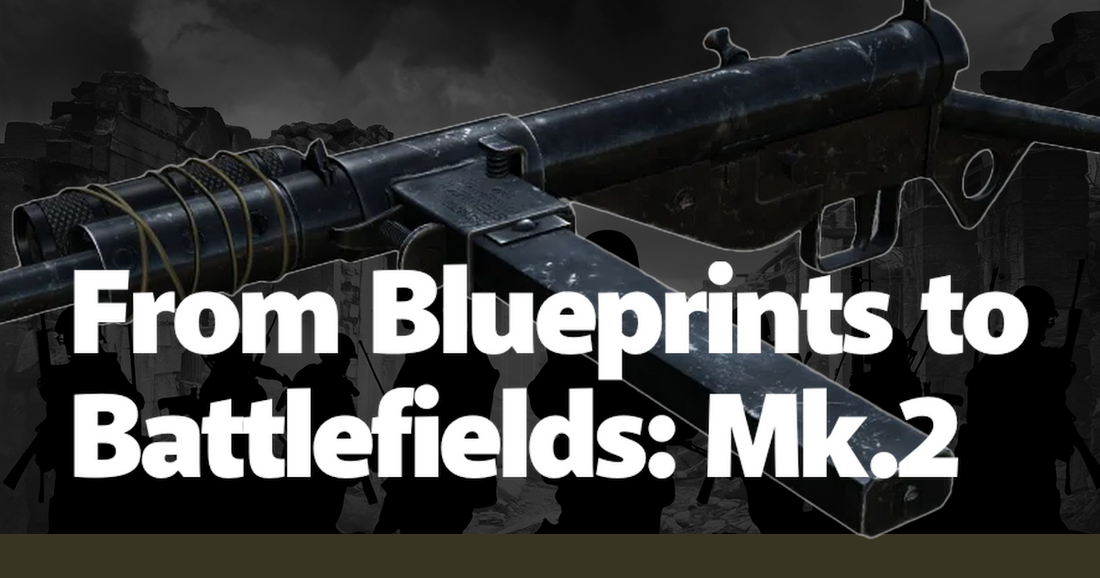The Mk.2, a marvel of modern military engineering, emerged from a lineage of innovation that began with the rudimentary designs of early 20th-century warfare. From its inception, the Mk.2 was envisioned as a game-changer, a piece of technology that would redefine the battlefield. This vision was rooted in the lessons learned from its predecessor, the Mk.1, which, while groundbreaking in its own right, revealed significant limitations in terms of mobility, firepower, and adaptability. The Mk.2 was born out of these insights, a testament to the relentless pursuit of perfection by military engineers who sought to create a machine capable of withstanding the harshest conditions and the most formidable adversaries.
The development of the Mk.2 was not merely an exercise in mechanical refinement; it was a comprehensive rethinking of battlefield strategy. Engineers and military tacticians worked in tandem, drawing on real-world combat experiences to inform their designs. One notable example was the inclusion of modular armor plating, inspired by the need for quick adaptability in the face of evolving threats. This innovation allowed the Mk.2 to be customized for specific missions, whether it be urban combat, open-field engagements, or defensive operations. The ability to swap out armor and weapon systems on the fly gave commanders unprecedented flexibility, transforming the Mk.2 from a mere vehicle into a versatile tool of war.
The heart of the Mk.2 is its advanced propulsion system, a significant leap forward from the clunky, fuel-guzzling engines of its predecessors. Utilizing a hybrid powertrain that combines diesel and electric engines, the Mk.2 boasts remarkable fuel efficiency and a reduced thermal signature, making it harder for enemy forces to detect and target. This innovation was not just about extending operational range; it was about survival. In the heat of battle, the ability to move swiftly and silently can mean the difference between life and death. Anecdotes from soldiers who have operated the Mk.2 often highlight this feature, recounting instances where the vehicle's stealth capabilities allowed them to outmaneuver and outflank enemy positions with devastating effectiveness.
Inside the Mk.2, the advancements are equally impressive. The crew compartment is a blend of ergonomic design and cutting-edge technology, aimed at maximizing both comfort and efficiency. Gone are the days of cramped, claustrophobic interiors; the Mk.2 provides ample space for crew members to operate with ease. State-of-the-art communication systems ensure that soldiers remain in constant contact with command, while advanced targeting systems provide unparalleled accuracy. One veteran operator described the experience as "piloting a tank and a fighter jet simultaneously," a testament to the seamless integration of various technological advancements.
The Mk.2's armament is another area where it truly shines. Equipped with a main cannon capable of firing a variety of munitions, from high-explosive rounds to armor-piercing shells, the Mk.2 can engage a wide range of targets with lethal precision. Additionally, the vehicle is outfitted with secondary weapons, including machine guns and anti-tank guided missiles, providing comprehensive firepower options. During a recent conflict, a single Mk.2 was credited with neutralizing multiple enemy armored units, a feat that would have been unthinkable with older models. These real-world successes underscore the Mk.2's role as a force multiplier on the battlefield.
The Mk.2's impact extends beyond its physical capabilities; it has also influenced military doctrine and training. The introduction of this advanced vehicle necessitated a reevaluation of tactics and strategies, leading to the development of new training programs for operators and commanders alike. These programs emphasize not only the technical aspects of the Mk.2 but also the strategic thinking required to leverage its full potential. The result is a new generation of soldiers who are not only proficient in operating advanced machinery but are also adept at integrating these tools into broader military objectives.
Despite its many strengths, the Mk.2 is not without its challenges. The complexity of its systems requires rigorous maintenance and a steady supply of spare parts, which can be a logistical nightmare in prolonged engagements. Furthermore, the high cost of production means that widespread deployment is often limited to elite units, leaving other forces to rely on older, less capable models. These issues highlight the ongoing tension between technological advancement and practical implementation, a balance that military planners must constantly navigate.
In conclusion, the Mk.2 represents a significant leap forward in military technology, a culmination of years of innovation and battlefield experience. Its advanced features, from modular armor to hybrid propulsion, make it a formidable presence on any battlefield. However, its true impact lies in its ability to reshape military strategy and training, preparing soldiers for the complexities of modern warfare. As we look to the future, the lessons learned from the Mk.2 will undoubtedly inform the next generation of military vehicles, continuing the cycle of innovation that defines the evolution of warfare.

